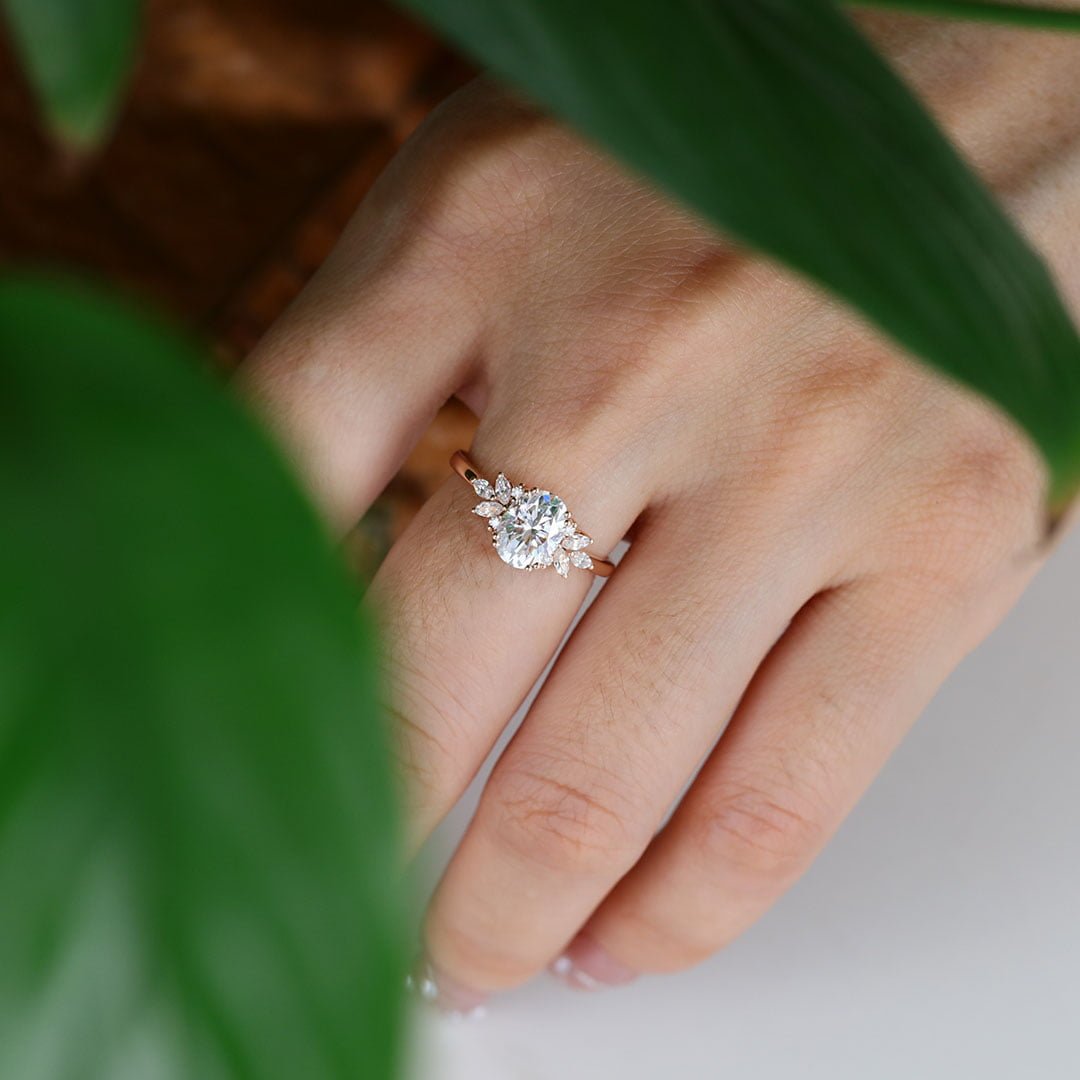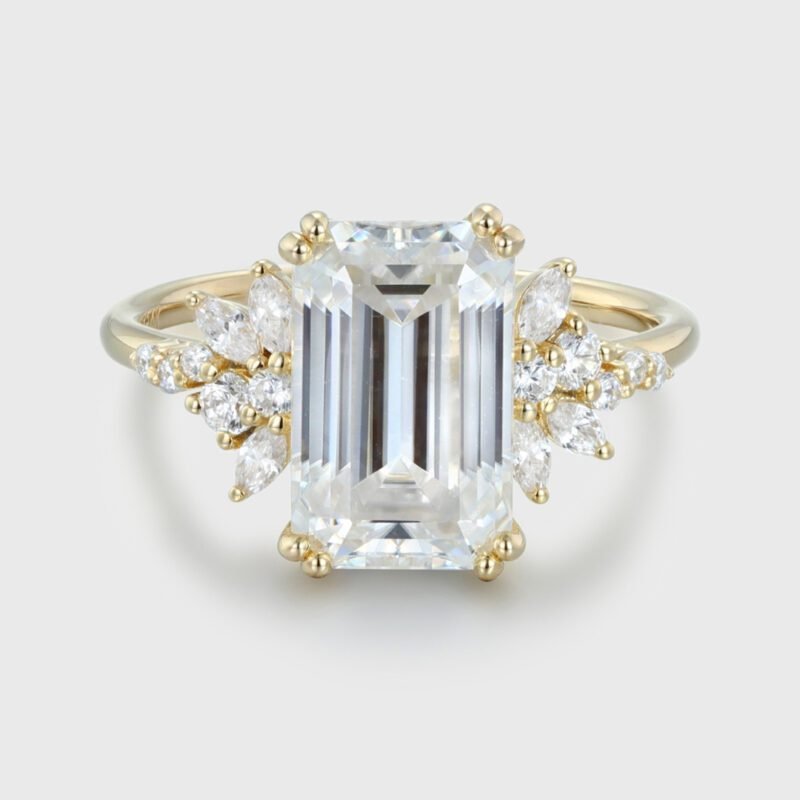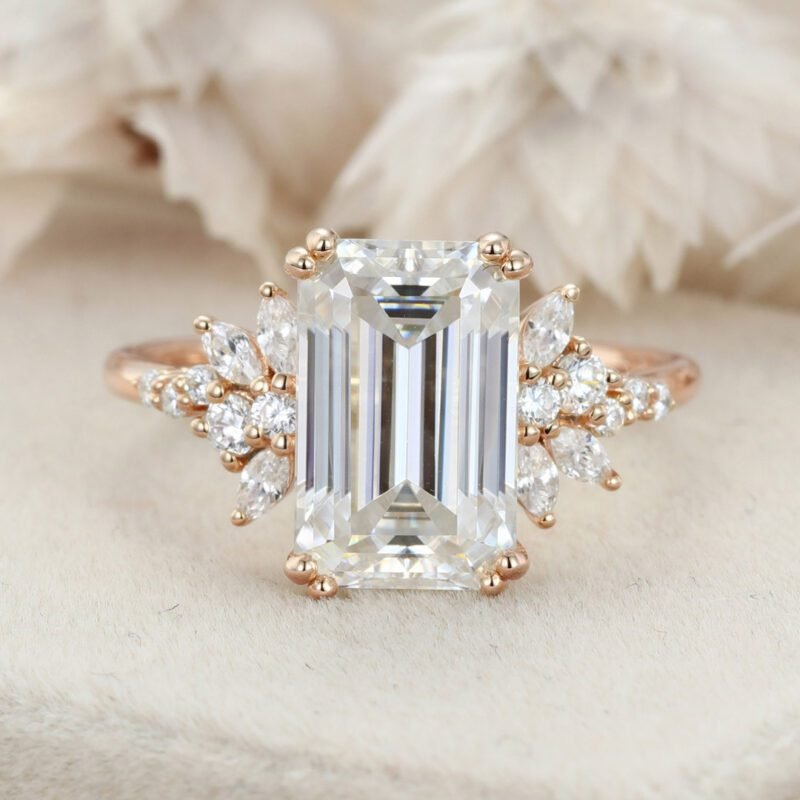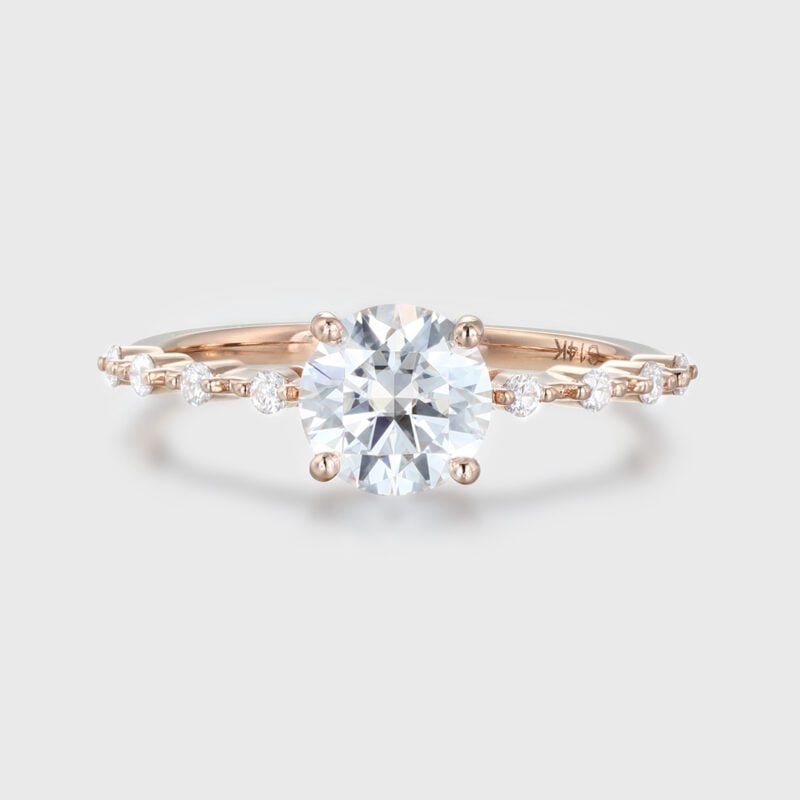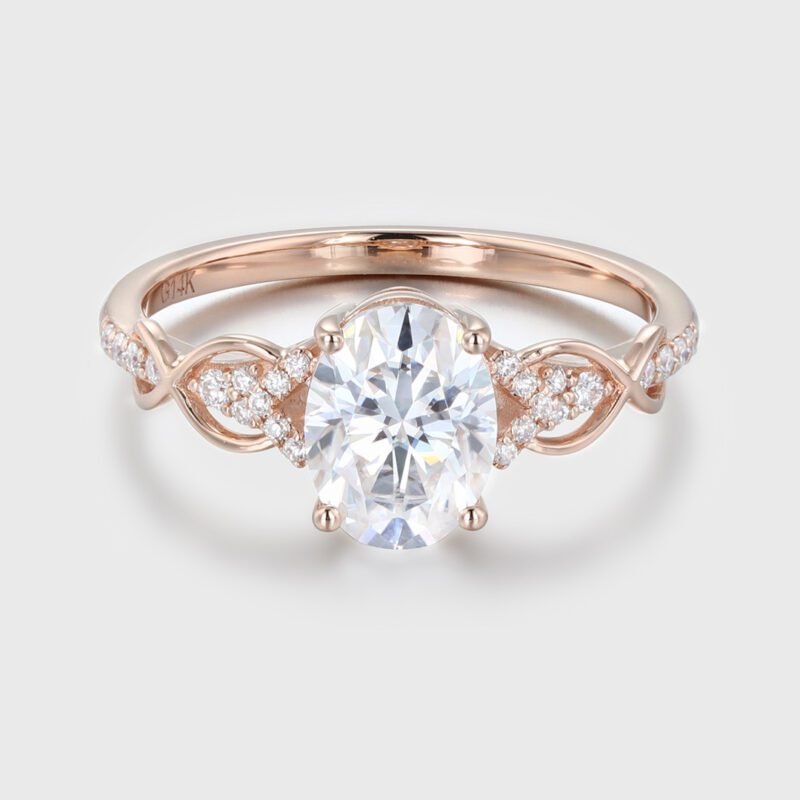When it comes to choosing a gemstone for jewelry, many people automatically think of diamonds, rubies, sapphires, and other traditional precious stones. However, in recent years, Moissanite has emerged as a captivating and cost-effective alternative that is gaining recognition for its stunning beauty and unique qualities. In this article, we will explore the value and worth of Moissanite, shedding light on why it has become a popular choice among jewelry enthusiasts and why it might be the perfect gemstone for your next piece of jewelry.
What is Moissanite?
Origin and Discovery
Moissanite is a naturally occurring mineral that was first discovered by French chemist Henri Moissan in 1893 in a meteorite crater in Arizona. Its rarity in nature led to the development of lab-created Moissanite, which has become the primary source for jewelry.
Composition and Hardness
Moissanite is composed of silicon carbide (SiC) and is renowned for its exceptional hardness. On the Mohs scale of mineral hardness, Moissanite ranks at 9.25-9.5, just below that of a diamond at 10. This remarkable durability makes Moissanite highly resistant to scratches, making it an excellent choice for engagement rings and other jewelry that experiences daily wear.

Diamond vs. Moissanite: A Sparkling Comparison
Diamond
- Origin: Natural diamonds are formed deep within the Earth over millions of years, under high pressure and heat.
- Hardness: Diamonds are the hardest known natural material, ranking 10 on the Mohs scale, making them highly durable and scratch-resistant.
- Brilliance: Diamonds are celebrated for their exceptional brilliance, fire, and sparkle, attributed to their unique crystal structure and ability to refract light.
- Color Range: Natural diamonds come in a variety of colors, with colorless (white) diamonds being the most prized. Fancy colored diamonds, such as blue, pink, or yellow, are rare and highly valuable.
- Cost: Natural diamonds can be expensive, with prices varying significantly based on factors like carat weight, cut, color, and clarity.
- Ethical Concerns: Some natural diamonds may be associated with ethical and environmental concerns due to mining practices in certain regions.
Moissanite
Hardness: Moissanite is one of the hardest known substances, ranking at 9.25 on the Mohs scale of mineral hardness. This exceptional hardness makes it highly durable and resistant to scratching, making it suitable for everyday wear.
Brilliance: Moissanite is celebrated for its remarkable brilliance. It has a high refractive index, which means it has excellent light-dispersing properties. This gives moissanite its impressive sparkle, often compared to that of diamonds.
Fire: Fire refers to the ability of a gemstone to disperse light into spectral colors. Moissanite exhibits strong fire, creating flashes of colorful light, which adds to its visual appeal.
Luster: Moissanite possesses a bright and vibrant luster, contributing to its overall shine and brilliance.
Color: Most moissanite gemstones are near-colorless or exhibit a slight yellow or greenish tinge. However, they are also available in various colors, including fancy colors like blue and green.
Double Refraction: Moissanite has the unique property of double refraction, which means that when light enters the gemstone, it splits into two rays. This property creates a distinct play of light and contributes to moissanite’s visual allure.

Characteristics of Moissanite
Origin: While natural moissanite is exceedingly rare, most moissanite available in the market is lab-grown. These lab-created moissanite gemstones have the same chemical composition as natural moissanite but are produced in controlled environments.
Affordability: Moissanite is more affordable than natural diamonds of similar size and quality, making it an attractive alternative for individuals looking for a budget-friendly option for jewelry, including engagement rings.
Ethical Considerations: Lab-grown moissanite is generally considered a more ethical and environmentally friendly choice compared to some natural gemstones, such as diamonds, which may be associated with ethical concerns related to mining practices.
Versatility: Moissanite’s durability and resistance to damage make it a versatile gemstone suitable for a wide range of jewelry, from engagement rings and wedding bands to earrings, necklaces, and bracelets.
Certification: To ensure the quality and authenticity of moissanite, it is often accompanied by certification from reputable gemological laboratories, which assess and grade its characteristics.
Availability: Moissanite is widely available in various shapes and sizes, allowing consumers to choose gemstones that suit their preferences and designs.
Recognizing the value of moissanite
Brand: Some moissanite brands have established a reputation for quality and may carry a premium price tag compared to generic moissanite.
Certification: The presence of a certificate from a reputable gemological laboratory that assesses the quality and characteristics of the moissanite can enhance its value and provide confidence to buyers.
Market Demand: Market demand and trends can also affect the value of moissanite. For example, if moissanite becomes particularly fashionable or sought after, prices may rise accordingly.
Setting: The type of jewelry setting in which the moissanite is placed can also influence its perceived value. Engagement rings, for example, often command higher prices compared to loose stones.
Rarity: While moissanite is not as rare as some other gemstones, unique and exceptionally rare moissanite varieties, such as fancy-colored stones, may have higher value due to their scarcity.
Moissanite is a great choice for engagement rings
Exceptional Brilliance: Moissanite has a higher refractive index than most gemstones, including diamonds. This means it exhibits exceptional brilliance, fire, and sparkle. A moissanite engagement ring will catch and reflect light beautifully, creating a dazzling and eye-catching display.
Hardness and Durability: Moissanite ranks at 9.25 on the Mohs scale of mineral hardness, making it one of the hardest known substances. This exceptional hardness means that moissanite is highly resistant to scratching, chipping, and breaking, making it suitable for everyday wear.
Affordability: Moissanite is significantly more affordable than natural diamonds of comparable size and quality. This makes it an attractive option for couples looking to maximize their budget while still getting a visually stunning gemstone.
Ethical and Environmental Considerations: Most moissanite available in the market is lab-grown, which means it doesn’t involve environmentally damaging mining practices or ethical concerns associated with some natural diamonds. Choosing a moissanite engagement ring can align with ethical and eco-friendly values.
Customization: Moissanite is available in various shapes, sizes, and colors. This versatility allows couples to choose the moissanite that perfectly fits their style and preferences. Whether you prefer a classic round brilliant cut or a unique fancy shape, moissanite offers options to suit your taste.
Color Consistency: Moissanite is typically near-colorless or exhibits a slight tint of yellow or green. Unlike natural diamonds, which can vary in color, moissanite provides consistent color quality across all stones, ensuring a uniform and appealing appearance.
Unique Choices: Moissanite comes in a range of fancy colors, including blue, green, and more. These colored moissanite options provide unique and eye-catching choices for couples who want to stand out with something distinctive.
Conflict-Free: Lab-grown moissanite is inherently conflict-free. It doesn’t support regions or practices associated with conflict diamonds, contributing to a more ethical choice.
Certification: Reputable moissanite manufacturers provide certificates verifying the quality and authenticity of their stones. This certification adds credibility and assurance to your purchase.
Long-Lasting Beauty: Moissanite’s brilliance and sparkle are enduring qualities. It will maintain its stunning appearance over time, symbolizing the enduring nature of your love.
Budget-Friendly: The affordability of moissanite allows couples to allocate their budget to other aspects of their wedding or future plans, such as a honeymoon or home purchase.
Unique Story: The story of moissanite, initially discovered in meteorites, adds a touch of uniqueness to your engagement ring. It’s a gem with a cosmic origin, making it a conversation starter and symbol of celestial love.

-
Engagement, Lab Grown Diamond Rings, Moissanite Engagement Rings, Nature Inspired Engagement Rings, Shop All Rings
1.5 Carat Oval Cut Moissanite Vintage Engagement Ring In 14K Rose Gold
$839.00Original price was: $839.00.$768.00Current price is: $768.00.
-
Engagement, Lab Grown Diamond Rings, Moissanite Engagement Rings, Nature Inspired Engagement Rings, Shop All Rings
1.5 Carat Oval Cut Moissanite Vintage Engagement Ring In 14K Rose Gold
$839.00Original price was: $839.00.$768.00Current price is: $768.00.
Moissanite is a naturally occurring mineral composed of silicon carbide (SiC). It was first discovered in 1893 by French chemist Henri Moissan while examining a meteorite crater in Arizona. Moissanite crystals found in nature are extremely rare and small in size. As a result, the moissanite gemstones used in jewelry are almost exclusively lab-grown, also known as synthetic moissanite.
Yes, moissanite engagement rings are worth buying for those who value affordability, brilliance, durability, ethical considerations, and customization options. They provide an attractive and budget-friendly alternative to natural diamonds while still offering stunning beauty and symbolism.
When a diamond tester is applied to a moissanite, it often generates a reading that suggests the gemstone is not a diamond. However, it's essential to note that not all diamond testers are created equal, and some may not accurately differentiate between diamonds and moissanite. Therefore, the reliability of a diamond tester in distinguishing between the two depends on the quality and accuracy of the tester itself.
The moissanite is generated by hand in a laboratory. The different prices of moissanite in the market are mainly differentiated by the brand and the 4C grading of the diamond.
Moissanite is really very inexpensive compared to diamonds, and you can buy 1-carat and 2-carat main stones without any pressure, which is why moissanite is a prime consideration for a very good engagement ring.
VVS (Very Very Slightly Included) moissanite is a term used to describe the clarity grade of a moissanite gemstone. Clarity grades are used to assess the presence of inclusions (internal flaws) and blemishes (external flaws) in a gemstone. The VVS grade represents an extremely high level of clarity and indicates that the moissanite has very minimal to almost no visible inclusions or blemishes under 10x magnification.

